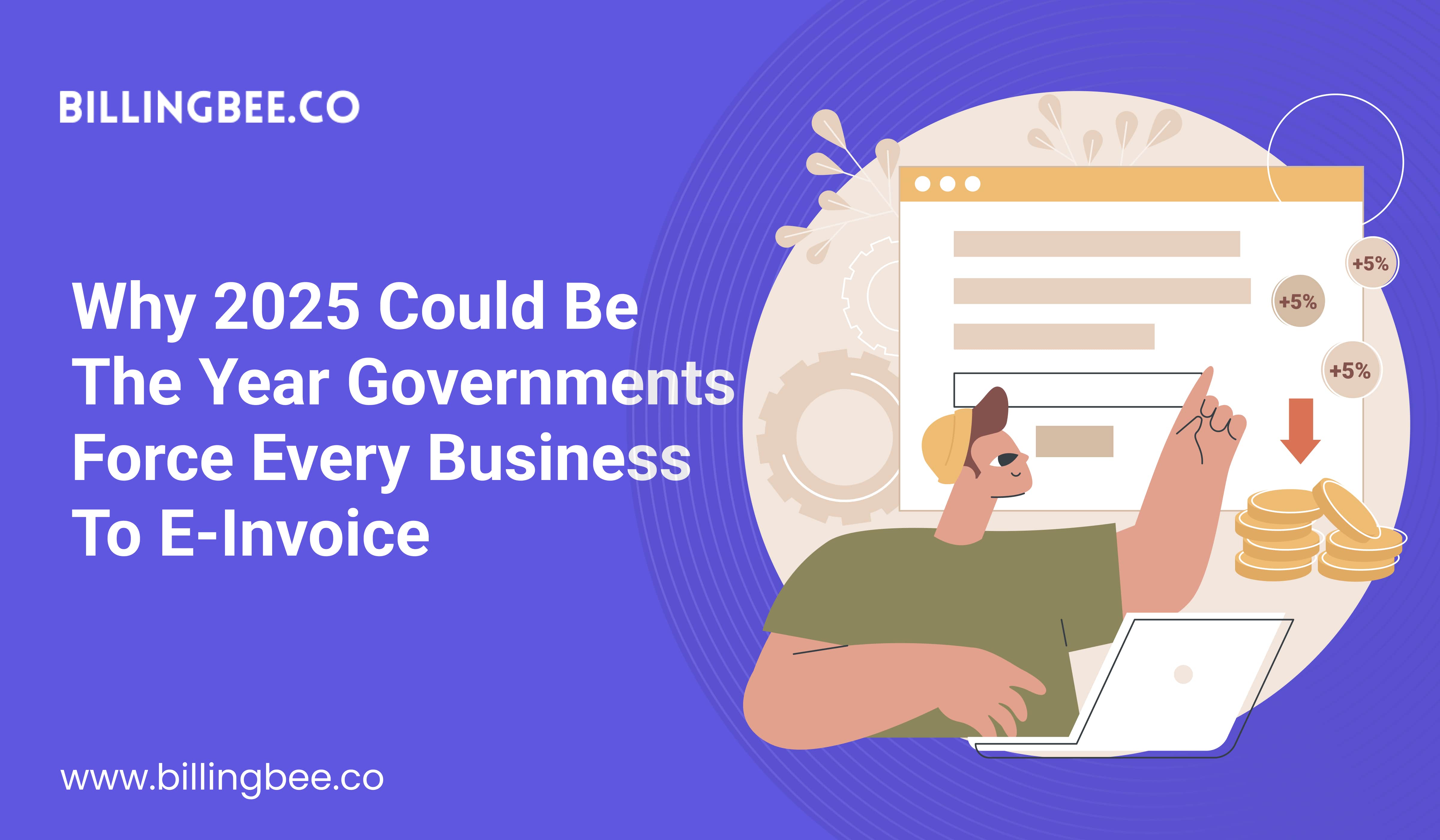Why 2025 Could Be the Year Governments Force Every Business to E-Invoice




Imagine waking up in early 2025 to find that your paper invoices and even traditional PDF billing methods are no longer valid in the eyes of the law. For many businesses around the globe, this will no longer be a hypothetical scenario—it will be reality. Governments are pushing harder than ever toward digital tax ecosystems, and the enforcement of mandatory e-invoicing rules 2025 could reshape how businesses of every size operate.
The Global Shift Toward E-Invoicing
For years, digital invoicing was seen as an efficiency upgrade—something tech-savvy businesses adopted to cut costs, save time, and reduce errors. But in 2025, e-invoicing won’t be just a best practice; in many countries, it will be a legal requirement.
Governments across Europe, Asia, and Latin America are introducing laws that require invoices to be created, transmitted, and validated through government-approved platforms. The reason is clear: real-time invoicing means real-time tax visibility. By enforcing mandatory e-invoicing rules 2025, tax authorities can reduce fraud, close VAT gaps, and strengthen their economies.
Compliance Isn’t Optional Anymore
Businesses that fail to comply with these rules risk more than administrative headaches. The penalties could include fines, delayed payments, loss of contracts, or even the inability to operate legally in certain markets. The compliance urgency is very real.
Take the European Union’s upcoming VAT in the Digital Age (ViDA) initiative or India’s phased e-invoicing mandate for GST. These frameworks are designed not only to monitor transactions but also to create a unified standard that businesses must follow. In short, governments are making it crystal clear: adaptation is not optional.
What This Means for Businesses
- Increased Transparency: Every transaction will be visible to tax authorities in real time. Businesses must be prepared for greater scrutiny.
- Technology Dependence: Companies will need reliable e-invoicing software capable of integrating with government portals. Manual processes will not pass compliance checks.
- Global Variability: Rules are not the same everywhere. Italy may require one format, while Mexico and Brazil demand another. Multinational businesses will need solutions that can adapt across borders.
- Operational Impact: From procurement teams to finance departments, workflows must be redesigned around e-invoicing standards.
The Hidden Opportunity
While the regulatory urgency might sound overwhelming, there’s another side to the story. Early adopters of e-invoicing don’t just stay compliant—they gain a competitive advantage.
- Faster Payments: Digital invoices reduce processing times, meaning cash flows improve.
- Lower Costs: No paper, no postage, fewer errors.
- Stronger Relationships: Vendors and clients prefer businesses that are easy to work with and aligned with global compliance standards.
- Future Readiness: As governments evolve from tax reporting to real-time auditing, businesses already using automated systems will stay ahead of the curve.
This is where platforms like BillingBee step in. Instead of scrambling at the last moment to adjust, businesses can implement a system that ensures compliance, simplifies cross-border invoicing, and streamlines financial operations in one place.
Lessons from Early Adopters
Countries like Brazil, Mexico, and Italy have been enforcing e-invoicing for years. Their experiences show that businesses that resisted the change initially ended up paying more in penalties and compliance costs later. On the other hand, those that embraced e-invoicing early benefited from smoother operations and stronger government relationships.
The same will be true in 2025. Businesses that hesitate to prepare for mandatory e-invoicing rules 2025 may find themselves locked out of markets or facing steep financial consequences.
How to Prepare for 2025
- Audit Your Current Processes: Identify where manual invoicing is still in place and outline areas where automation can be applied.
- Understand Regional Regulations: Whether you operate locally or globally, research the specific e-invoicing rules relevant to your markets.
- Invest in Scalable Software: A solution like BillingBee ensures you meet diverse government requirements without reinventing your processes each time.
- Train Your Teams: Compliance isn’t just about software. Finance and accounting teams must be trained on how to adapt to new invoicing workflows.
- Plan for Future Changes: Governments will continue refining these systems. Choose flexible tools that can evolve with the regulations.
The Bottom Line
The shift to e-invoicing is not just another compliance hurdle—it’s a transformative moment for global business. Governments want visibility, and they are ready to enforce it. Businesses, on the other hand, have a chance to not only comply but also thrive by adopting digital invoicing systems early.
As mandatory e-invoicing rules 2025 roll out, one thing is certain: the question is not if businesses will e-invoice, but how prepared they will be when the mandate takes full effect. Those who act now will find themselves ahead of the curve, while those who delay may be caught in a compliance storm.
The choice is clear. Prepare today, or pay tomorrow.